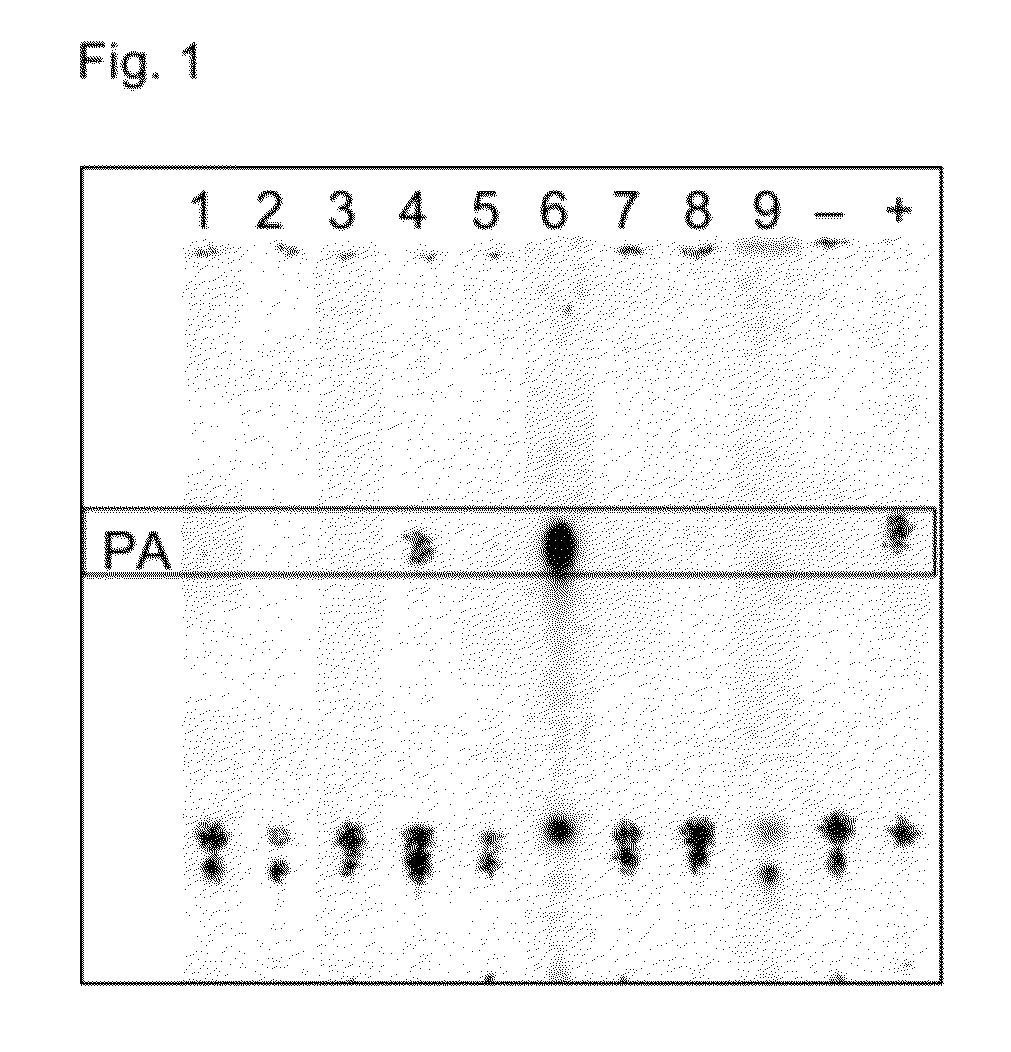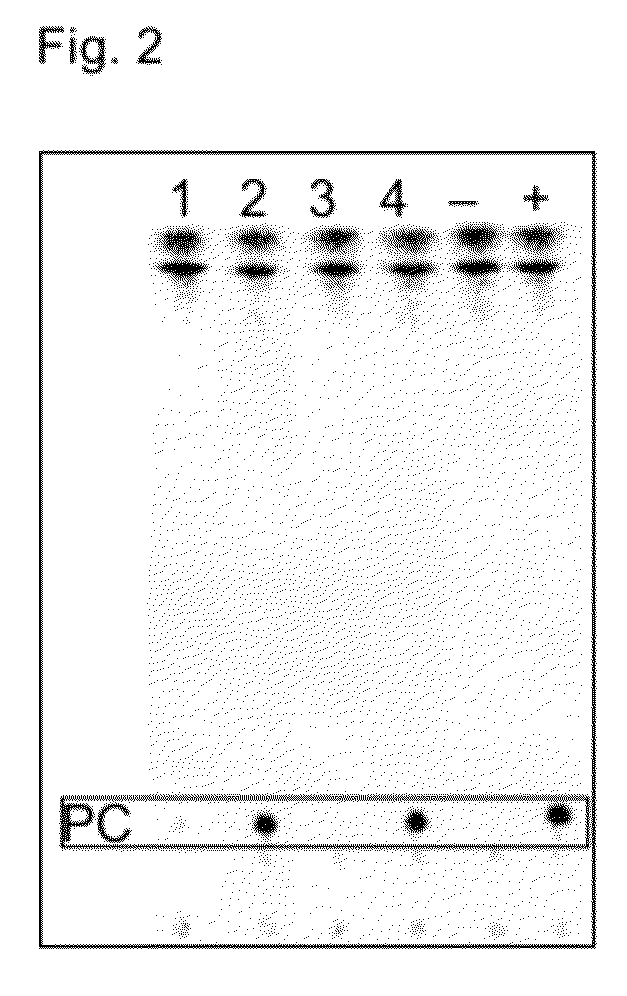Acyltransferases and uses thereof in fatty acid production
a technology of acyltransferases and fatty acids, applied in the direction of transferases, recombinant dna-technology, botany apparatus and processes, etc., can solve the problems of harmful effects on the integrity and transport characteristics of membranes, the inefficiency of triacylglyceride incorporation, and the inability to efficiently incorporate triacylglycerides into membranes
- Summary
- Abstract
- Description
- Claims
- Application Information
AI Technical Summary
Benefits of technology
Problems solved by technology
Method used
Image
Examples
example 1
General Cloning Methods
[0115]Cloning methods as e.g. use of restriction endonucleases to cut double stranded DNA at specific sites, agarose gel electrophoreses, purification of DNA fragments, transfer of nucleic acids onto nitrocellulose and nylon membranes, joining of DNA-fragments, transformation of E. coli cells and culture of bacteria where performed as described in Sambrook et al. (1989) (Cold Spring Harbor Laboratory Press: ISBN 0-87965-309-6)
example 2
Sequence Analysis of Recombinant DNA
[0116]Sequencing of recombinant DNA-molecules was performed using a laser-fluorescence DNA sequencer (Applied Biosystems Inc, USA) employing the sanger method (Sanger et al. (1977) Proc. Natl. Acad. Sci. USA 74, 5463-5467). Expression constructs harboring fragments obtained by polymerase chain reactions were subjected to sequencing to confirm the correctness of expression cassettes consisting of promoter, nucleic acid molecule to be expressed and terminator to avoid mutations that might result from handling of the DNA during cloning, e.g. due to incorrect primers, mutations from exposure to UV-light or errors of polymerases.
example 3
Cloning of Yeast Expression Construct Via Homologous Recombination
[0117]The open reading frame listed in SEQ ID NOs: 1, 3, 5, 7, 9, 11, 13, 15, 17, 19, 21, 23, 25, 27, 29, 31, 33, 35, 37, 39, and 41 encoding polypeptides with the amino acid sequence SEQ ID NOs: 2, 4, 6, 8, 10, 12, 14, 16, 18, 20, 22, 24, 26, 28, 30, 32, 34, 36, 38, 40, and 42 that have acyltransferase activity can amplified using the primer listed in table 2 in a polymerase chain reaction. By doing so, the open reading frame is 5′ fused to about 60 nucleotides of the 3′ end of the GAL1 promoter sequence and 3′ fused to about 60 nucleotides of the 5′ end of the CYC1 terminator sequence. To integrate these fragments into pYES2.1 TOPO downstream of the galactose inducible GAL1 Promoter via homologous recombination, the vector pYES2.1 (Invitrogen) can be digested using the restriction endonucleases Pvu II and Xba I, and Saccharomyces cerevisea can be transformed with 5 to 20 ng of linearized pYES2.1 TOPO vector and 20 t...
PUM
 Login to View More
Login to View More Abstract
Description
Claims
Application Information
 Login to View More
Login to View More - R&D
- Intellectual Property
- Life Sciences
- Materials
- Tech Scout
- Unparalleled Data Quality
- Higher Quality Content
- 60% Fewer Hallucinations
Browse by: Latest US Patents, China's latest patents, Technical Efficacy Thesaurus, Application Domain, Technology Topic, Popular Technical Reports.
© 2025 PatSnap. All rights reserved.Legal|Privacy policy|Modern Slavery Act Transparency Statement|Sitemap|About US| Contact US: help@patsnap.com



